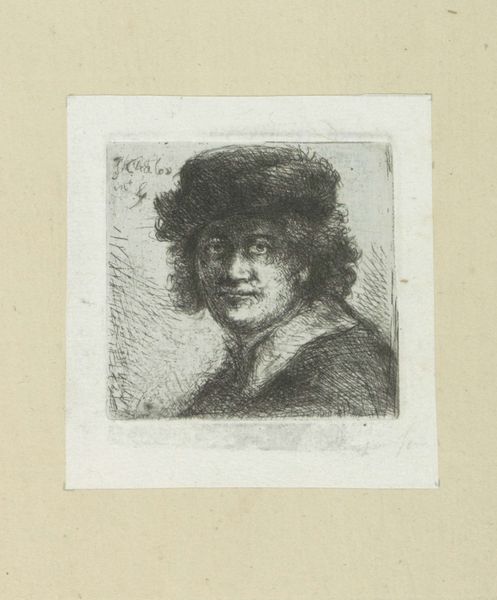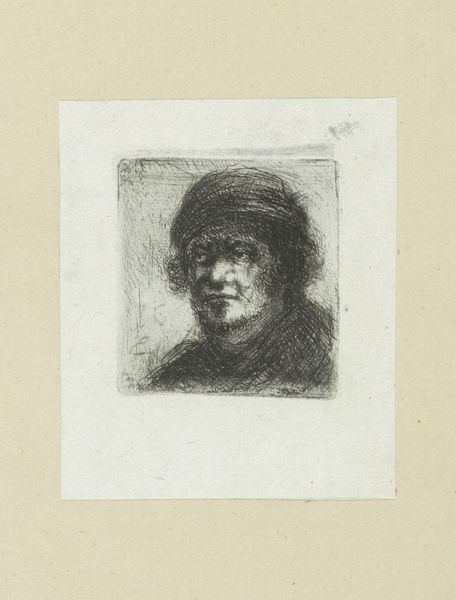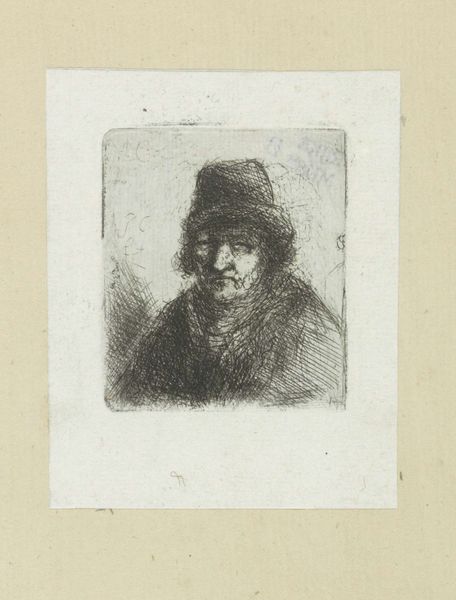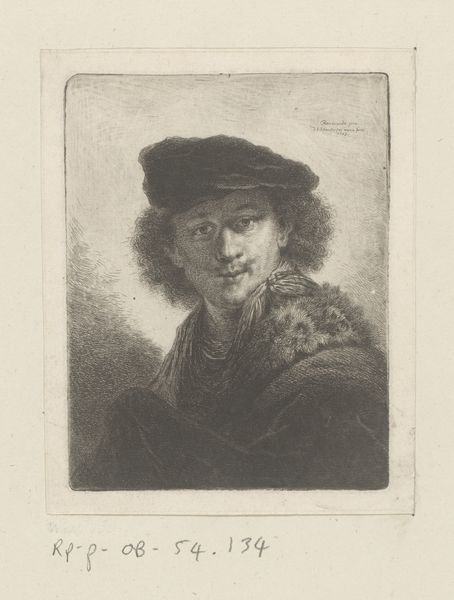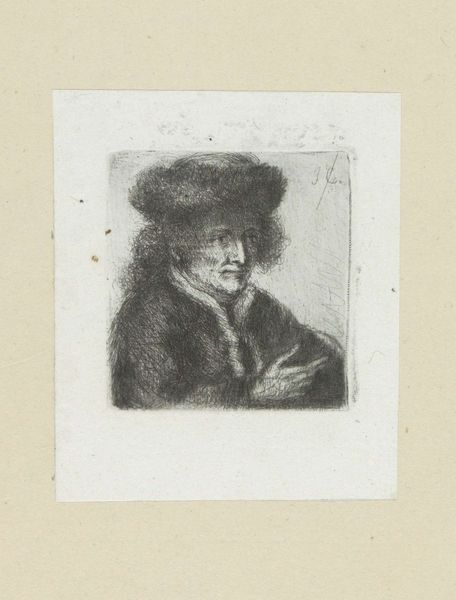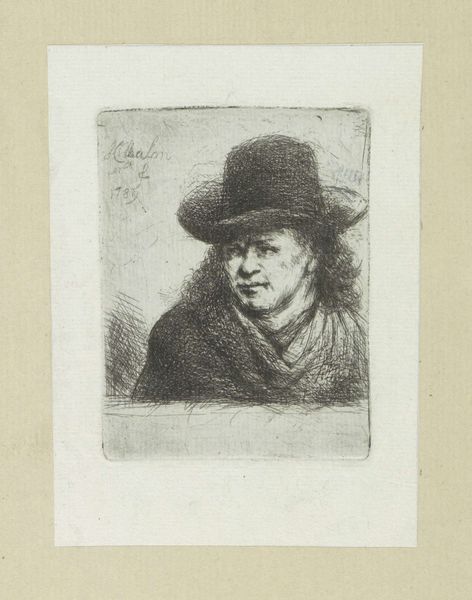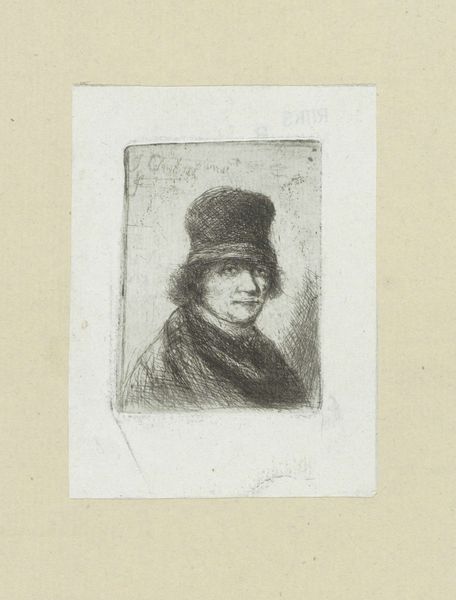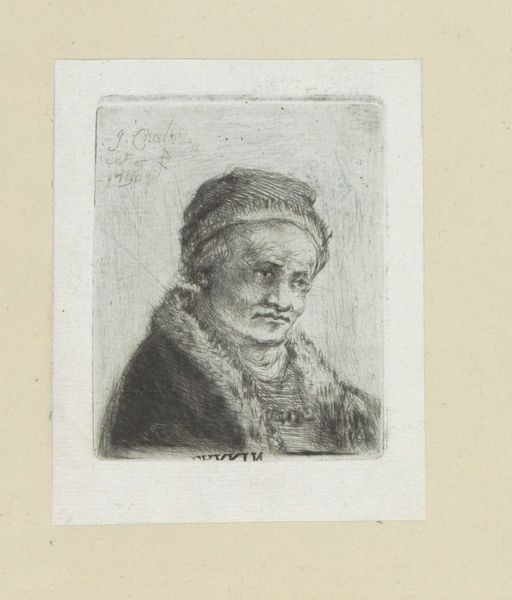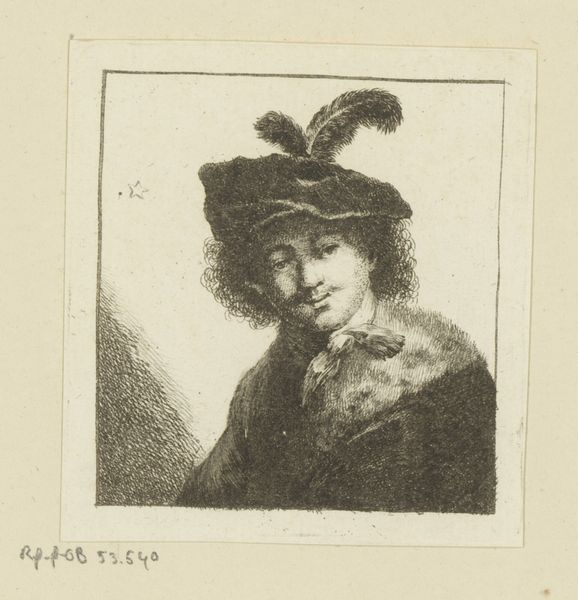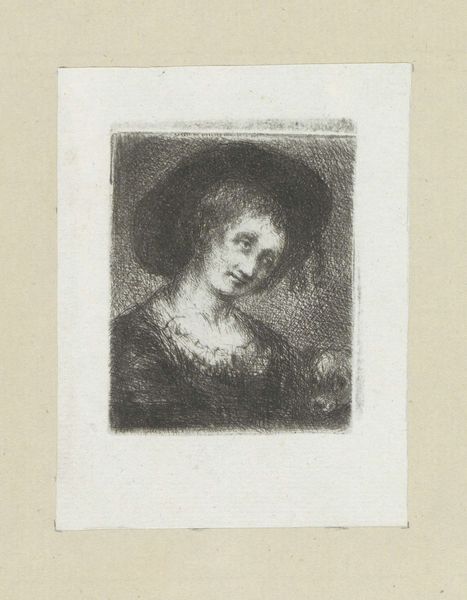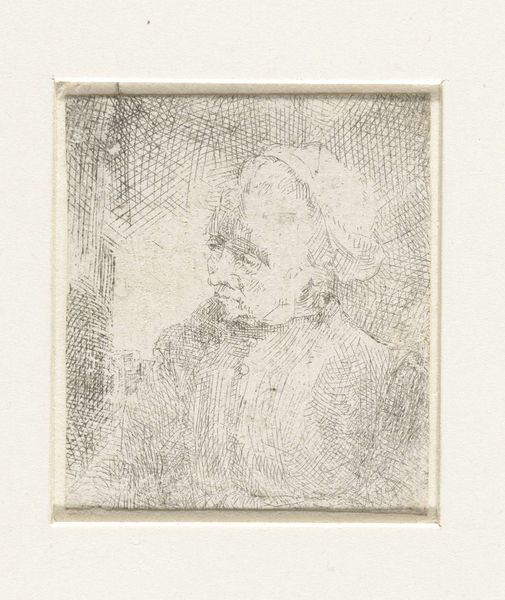
drawing, print, etching, intaglio
#
portrait
#
drawing
# print
#
etching
#
intaglio
#
charcoal drawing
#
tonal
Dimensions: height 74 mm, width 69 mm
Copyright: Rijks Museum: Open Domain
Editor: Here we have Jan Chalon’s "Volwassen man met hoed" from 1802, a print rendered with etching and intaglio. It has this very intimate and somewhat somber feel to it. What strikes you about this piece? Curator: It’s intriguing how Chalon, working in a time of immense social upheaval, uses the portrait to subtly explore identity. The hat, the lines etched deep around the eyes – these aren't just details. They are signifiers of social standing but also markers of the subject’s inner life, wouldn’t you say? How might the lack of idealization challenge conventional portraiture norms for you? Editor: Well, it’s definitely not trying to show someone powerful or wealthy in a flattering light. Curator: Exactly. Consider the politics of representation during this era. Who was deemed worthy of being portrayed and how? This etching disrupts that. It seems to invite us to consider not just the individual, but the human condition beyond social hierarchy, don’t you agree? The sitter's gaze feels almost confrontational, yet also vulnerable, suggesting a certain discomfort or resistance within the societal structures. Editor: That's really interesting. It reframes how I see portraits from that time. It makes you think about the unseen people and their stories. Curator: Precisely. By looking at this 'ordinary' man, Chalon perhaps seeks to legitimize everyday experiences within the art world. It highlights the personal amid a landscape of grand historical narratives. Editor: I hadn’t thought of it like that before. I see it as a window into questioning established power dynamics, one etching at a time. Curator: Indeed, each line carrying its own silent rebellion.
Comments
No comments
Be the first to comment and join the conversation on the ultimate creative platform.
